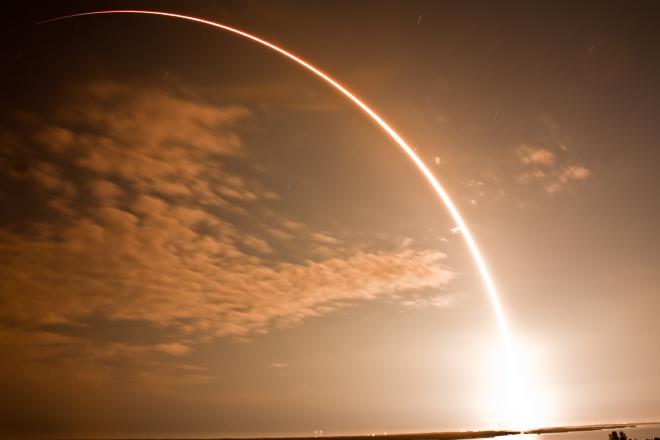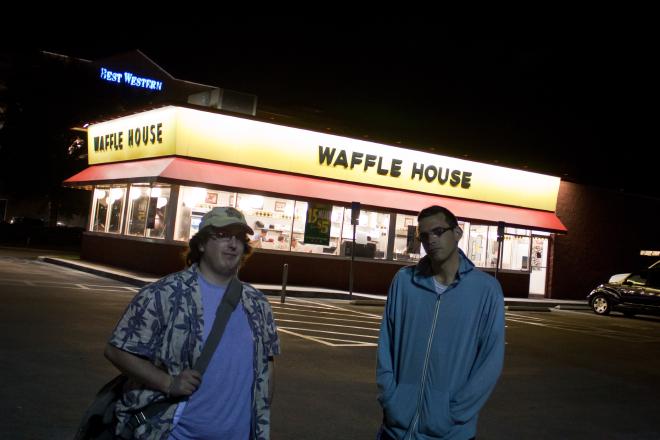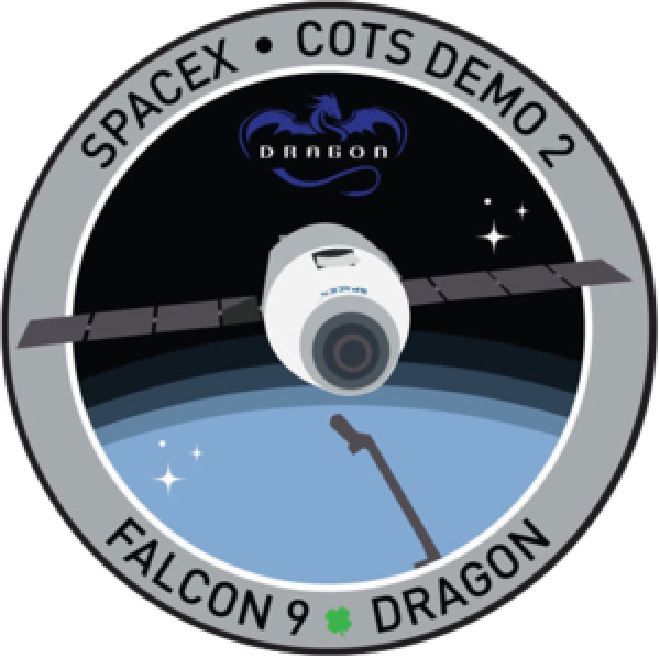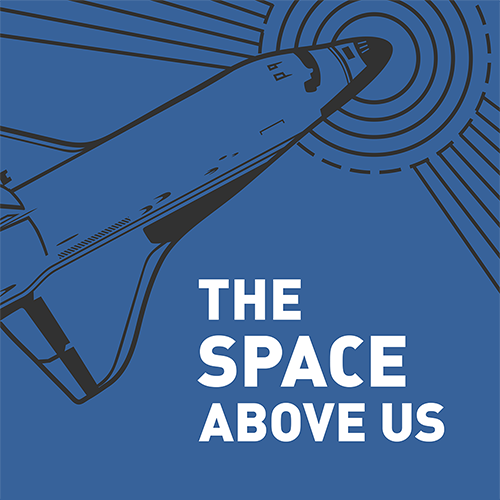Supplemental 8: My Second Rocket Launch
Table of Contents
New episode! Sort of! It’s a filler supplemental since I wasn’t able to get NASA-5 done and I’m on vacation next week. Oh well, there are some fun stories here. Please enjoy this terrible photo of me from 2012 outside a Waffle House at 5am.
Episode Audio #
Photos #




SpaceX Video #
Also, SpaceX put together a pretty entertaining summary of the mission I saw launch, including some really primo butt-rock:
Transcript #
NOTE: This transcript was made by me just copying and pasting the script that I read to make the podcast. I often tweak the phrasing on the fly and then forget to update the script, so this is not guaranteed to align perfectly with the episode audio, but it should be pretty close. Also, since these are really only intended to be read by myself, I might use some funky punctuation to help remind myself how I want a sentence to flow, so don’t look to these as a grammar reference. If you notice any egregious transcription errors or notes to myself that I neglected to remove, feel free to let me know and I’ll fix it.
Hello, and welcome to The Space Above Us. Supplemental 8, My Second Rocket Launch, and Catching a Dragon’s Tail
Oh no! Another filler episode? Yes, another filler episode. If you’re not interested in hearing a fun launch story and a little bit about early SpaceX, feel free to skip, no hard feelings, see you for the NASA-5 episode in two weeks.
So yes, another filler episode. To be fair, it’s been like ten months since the last one, but I still feel bad. Lately I’ve gotten into a bad habit of slipping the episode to Saturdays, leaving less time for the next episode and perpetuating the cycle. Generally it’s no big deal, the episode just comes out a couple days later than usual and nobody seems to mind, but this Saturday I am leaving for my first ever cruise, so that’s not gonna work. Now I’m sure you’re wondering, “JP, couldn’t you have seen this situation coming for literally months and done something about it?” to which I can only respond by quoting the great philosopher Philip J. Fry and say: time makes fools of us all.
Since I won’t be able to get the proper episode out on time and I will be somewhere in the middle of the ocean at the usual release time next week, the NASA-5 episode is going to have to slip by two weeks. That’s a pretty big bummer, and I don’t like to leave you all hanging, so instead, I come to you with this mini supplemental and hope you will find it an entertaining interlude until I can get back.
The last time I did one of these filler supplementals was when I talked about my first rocket launch, the penultimate launch of the space shuttle, STS-134. In preparing for that trip, I arranged to spend over a week in Florida just so I could be sure not to miss the launch. This time was a little different. This time I bought my plane tickets about 13 hours before liftoff, and was on the ground in Florida for barely five hours. But let’s take a step back.
Back in the spring of 2012, the space shuttle program had just recently ended, the SLS program was just a few months old and was planning to launch by the end of December 2016, and gaining more and more attention was a funny little up and coming launch services company called Space Exploration Technologies.. better known as SpaceX. At the time, I was living in Buffalo, New York, and had become a big fan of SpaceX. I basically wouldn’t shut up about it, whether people wanted to hear about it or not. This was back when if anyone knew who Elon Musk was at all, they usually thought he was a sort of charming and awkward engineering genius. Regardless of what you think of him these days, I think it’s safe to say that the general public’s opinion on him has shifted a bit since then.
SpaceX was actually already ten years old at this point, and they had a few successes to show for their efforts. After three failed launches of the tiny Falcon 1 rocket, they finally got it right with lucky number 4 in 2008. After one more successful launch of the Falcon 1, they set their sights on bigger goals. Those bigger goals eventually culminated in the first launch of the Falcon 9 launch vehicle in June of 2010. But this was a very different Falcon 9 than the vehicle we know today. It still had nine engines, but they were arranged in a grid instead of a circle. It was still a large vehicle, but only about 2/3 as tall as the modern Block 5 design. It could still send stuff into orbit, but only about half as much as the Block 5.. and that’s with the Block 5 landing the booster for reuse. In expendable mode it carries even more. But the first iteration of the Falcon 9 was still a pretty impressive vehicle. It was a start.
At the time that this story begins, the Falcon 9 had launched twice, once with a boilerplate version of its Dragon cargo vehicle, and a second time with an actual Dragon. Well, an actual dragon.. spacecraft. Not an actual dragon. Anyway. SpaceX was extremely eager to prove that Dragon worked, because they had been contracted by NASA to deliver cargo to the International Space Station as part of the Commercial Orbital Transportation Services program. The name was a clever pun, since it shortened to COTS, which usually means “Commercial Off The Shelf” and this contract had the same idea. NASA would essentially be buying a product. When NASA purchases a Windows license from Microsoft, they don’t get intimately involved with Microsoft’s development process, they just buy the product. And this would be a somewhat similar idea. NASA would certainly be involved with SpaceX during the development of the Dragon, but to a much lesser degree than in a traditional spacecraft. They’d be closer to buying it off the shelf.
The second launch of the Falcon 9 had delivered Dragon to orbit for the COTS1 demonstration mission. It proved that the spacecraft did what it said on the box and was able to successfully execute its mission.
The original plan was to then have a COTS2 mission which would rendezvous with the International Space Station but just pass underneath it, not actually berthing. But COTS1 went so well that NASA was convinced to upgrade COTS2 and go all the way to the station. Hence the new name: COTS2+ or C2+.
On May 19th, 2012, SpaceX was ready to proceed with the launch, and I was ready to proceed with a crazy attempt to photograph the launch.. from Buffalo. Using some software I found online, it looked like it should be just barely visible over the horizon. So ever the optimist, I woke up at something like 4 in the morning, put on NASA TV, and set up a camera and tripod pointed in what I hoped was the right direction. The countdown proceeded to zero, and with a green flash, all nine engines of the Falcon 9 roared to life.. only to shut down again. With half a second on the clock, the onboard computer aborted the launch due to a problem with one of the engines. And with an instantaneous launch window, that was it for that attempt. So glad I woke up at 4 in the morning on a Saturday.
On Monday I got to work and commiserated with a fellow space nerd, wondering if the launch would go on the next attempt. By the early afternoon a crazy idea occurred to me.. the launch have been rescheduled for 3:44 AM that coming night. I wooonder how much plane tickets would cost. Turns out it was an amount that I was willing to pay. So throwing any idea of actually working out the window, I dug into the logistics.
With only14 hours to go before the scheduled liftoff, I started figuring out the plan. I’d have to transfer in Baltimore, hope that nothing went wrong, and then continue on to Orlando, arriving 5 minutes past midnight. That would leave me and a local friend about three and a half hours to get out to the Cape. No problem. I asked my Orlando friend if he wanted to go see this launch in the middle of the night, which of course, was code for “please drive me to this launch in the middle of the night.” He wasn’t thrilled since he got off of work at 11PM and had to be back at work by 1PM, but he eventually relented. 13 hours before liftoff, the tickets were bought, and my crazy plan was underway.
The second work ended I rushed home, fed my cats Neil and Buzz, grabbed my camera, telephoto lens, tripod, and an extra battery, and was out the door. I boarded the plane with nothing but my small carry-on camera bag, which felt very strange. By this point my second flight had already been delayed, meaning I wouldn’t be landing until almost exactly 3 hours before liftoff. Cutting it close, but still plenty of time.
Until.. twist! As we passed Jacksonville, their Air Traffic Control center had a power outage, requiring our plane to circle around until the problem was fixed. We ran out of fuel and were forced to land, refuel, and take off again. The new landing was estimated to be only two hours before the Falcon 9 liftoff time. My anxiety was mounting.
The flight into Orlando only had four people on board somehow, so of course, I soon found myself excitedly explaining what I was headed to Florida to do and what SpaceX was.. to the flight attendants.
We finally landed in Orlando, I rushed through the empty airport, found my friend waiting outside, and hopped in the car. T-minus 1 hour and 54 minutes to launch, and about 45 minutes of driving to go.
With this entire trip being so spur of the moment, I didn’t actually have a ton of time to consider the best viewing locations. I obviously wouldn’t be watching from the NASA Visitor’s Complex on such short notice, and while I knew that there was plenty of waterfront viewing, I didn’t know what to expect. But there was one place in particular that I knew for sure had a good view for some launches.. the Max A. Brewer Memorial Parkway. The same bridge where just over a year earlier I had spent the night shivering on the sidewalk, trying to sleep before the STS-134 launch.
So that’s how it was that with very little warning, in the middle of the night, I found myself walking onto an almost completely deserted bridge. It was incredibly surreal. This place was so important to me; it was the place where I saw my first ever rocket launch. So suddenly being there, with no crowds, in the middle of the night, felt like I was in a bizarre dream. But it wasn’t a dream. With just under an hour to launch, we had made it. 14 miles, or 23 kilometers away, I could just make out the gleaming shape of the Falcon 9, shrouded by clouds of vented oxygen.
I spent the next hour setting up the camera and tripod, setting up manual focus, and trying to guess what the right framing would be. After my STS-134 adventure last year, I had some idea of what to expect, but I had never seen a night launch before. The plan for my photo was to use a remote to open the shutter moments before liftoff, go through the entire first stage ascent, and then close the shutter. But I didn’t know where the Falcon 9 would go, what exposure settings made sense, or anything. I wasn’t even sure if it would be taking off to the northeast or southeast. Eventually I pulled out fairly wide angle 18mm lens, made a sort of vague swooping motion with my arm, tracing out where I thought the rocket might go, plunked the tripod down on top of my friend’s car, and hoped for the best.
Finally, at 3:44 and 38 seconds AM, the sky exploded. At least, that’s what it looked like. The flash of ignition was clearly visible, even from 14 miles away. But then when the Falcon 9 lifted off, it was like the sun was rising. It was completely crazy. I had wildly underestimated what it would look like. As the vehicle rose, a deep rumble overtook us in the quiet night air. Just like with the shuttle, the power of the sound rose and rose until it felt like the world was going to fall apart. But unlike the shuttle, it didn’t disappear into a bank of clouds almost immediately after liftoff. The Falcon 9 remained visible all the way through MECO, disappearing in a flash. But then since it was so dark out, we could clearly see the second stage ignite and continue on for quite a while. My best guess was it was somewhere off the coast of the Carolinas before I finally lost sight of it.
There were a handful of other hardcore space nerds on the bridge that night, and one of them was some dude in a convertible with his radio tuned in to the audio of NASA TV. We gathered around his car to hear updates and cheering as Dragon separated and deployed its solar arrays, a successful start to the mission.
And that wasn’t the only success. After I retrieved my camera from the top of my friend’s car, I checked the photo I had captured and couldn’t believe it. Through absolutely dumb luck, I had framed the shot nearly perfectly, and actually ended up with a reasonable exposure level. It’s one of the photos I’m most proud of and as you enter my house, the first thing you see are the prints of my STS-134 and COTS2+ launch photos.
Dragon would continue on to a successful rendezvous with the ISS, gently moving up the R-bar in a series of checkpoints, before stationkeeping just a few meters away. Astronaut Don Pettit, who in our main narrative has been selected as an astronaut but has yet to fly, had been closely monitoring the approach from the ISS Cupola. Using the station’s own remote manipulator system, Canadarm 2, he reached out, and grappled a fixture on the side of Dragon. As SpaceX headquarters erupted in cheers, Pettit radioed down, “Houston, Station, looks like we got us a dragon by the tail.”
The original version of Dragon would go on to dock with the ISS 20 times, delivering supplies, experiments, and equipment. And critically, it provided the only way of returning cargo to Earth, short of essentially putting it in the lap of Soyuz crew members. And once the original Dragon was retired, SpaceX began flying the new Crew Dragon, still capable of ferrying supplies but also, you guessed it, crew members. At the time of this recording, Crew Dragon has been to the ISS 11 times, carrying both cargo and crew. In fact, there’s one more that launched this morning and is docking some time tomorrow. It’s even carrying a familiar face: Koichi Wakata. We followed his first flight on STS-72, retrieving Japan’s Space Flyer Unit. And he’s still going!
While Dragon continued on to the ISS, my and I continued on to, where else, Waffle House. After that it was back to the airport, back to Buffalo, and right back to work! I was in Florida for just a little over 5 hours, almost completing a full trip to the Sunshine State without seeing any sunshine.
And that’s my second launch! Don’t worry, I think that’s the end of this series. My next few launches were fun, but don’t come with any crazy stories. Though maybe someday I’ll tell the story of how I was only 4 miles away when they launched Elon Musk’s car into space.
Thank you all for listening, thank you all for being supportive with the occasional schedule slip, and thank you for spreading the word about the podcast and about spaceflight history in general. I couldn’t do it without you all. See you in a couple weeks.
Ad Astra, catch you on the next pass.
